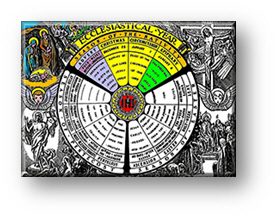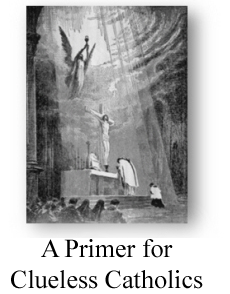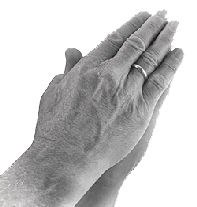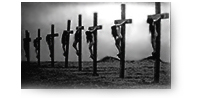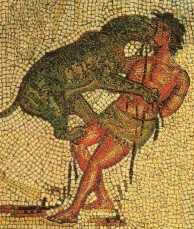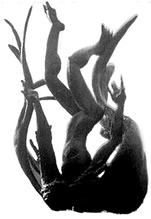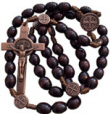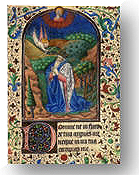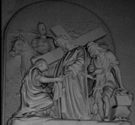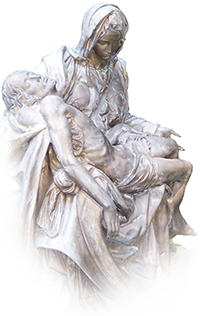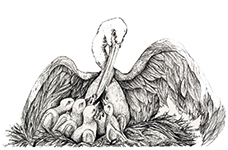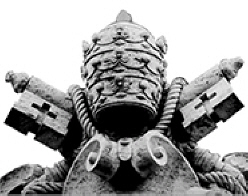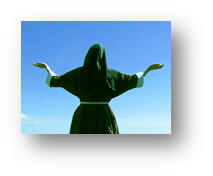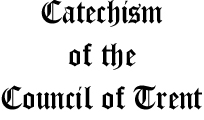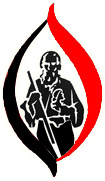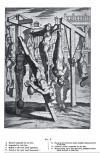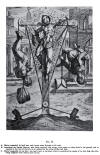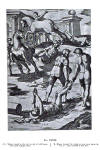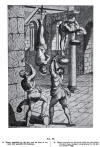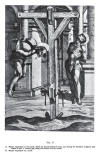|
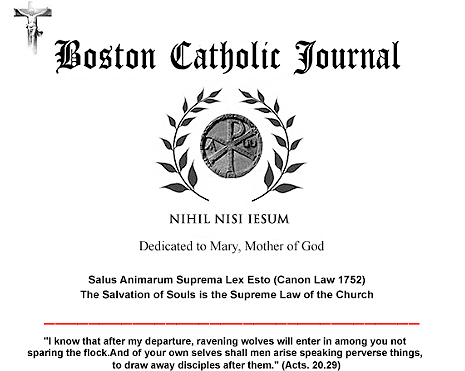
The Tortures and Torments
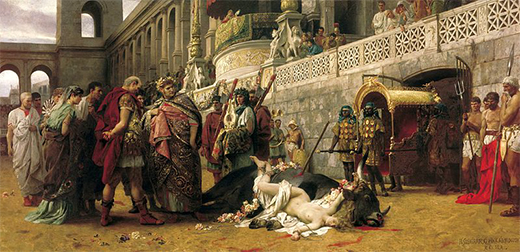
of the
Christian Martyrs
(a Modern Edition)
De
SS. Martyrum Cruciatibus
by Reverend Father
Antonio Gallonio, translated from the Latin by A.R. Allison, 1591
Revised and Edited into
Contemporary English
by Geoffrey K. Mondello
for the Boston Catholic Journal
“Father Gallonio’s
work was intended for the edification of the Faithful, and was issued
with the full authority and approbation of the Church.“
A. R. Allison
Note:
This translation by the Boston Catholic
Journal has been edited for abstruse and confusing archaisms, needless
redundancies, and presented in Modern (American) English. It is our
goal to render this important, historical document into an easily readable
format. However, we encourage the reader to consult the following
important link:
Acta Martyrum for a necessary perspective on the important distinction
between authentic Acta Matyrum, scholarly hagiography, and edifying
historical literature. This does not pretend to be a scholarly edition,
replete with footnotes and historical references. Indeed, the original
vexes us with its inconsistent references, and the absence of any methodical
attribution to the works or authors cited. However, it must be remembered
that the present work is not offered to us as a compendium, or even
a work of scholarship. That was not its intended purpose. For us, however,
it is intended to accompany the
Roman Martyrology which we bring you each day, in the way of supplementing
the often abbreviated account of the Catholic Martyrs with an historical
perspective and a deeper understanding of the suffering they endured
for the sake of Christ, His Holy Catholic Church, and the Faith of our
fathers which, in our own times, sadly, recedes from memory for the
sake of temporizing our own Catholic Faith to accommodate the world
at the cost of Christ.
If wish to download
the entire book, simply click
on the appropriate link for the file type you prefer:
PDF
or
Microsoft Word.
CONTENTS
CHAPTER I
(this page)
Of the Cross, of Stakes,
and Other Means by which the bodies of Christians remaining steadfast
in their Confession of Christ were suspended
CHAPTER II
Of the Wheel, the
Pulley, and the Press as instruments of torture
CHAPTER III
Of the Wooden Horse as
an instrument of Martyrdom; also of many different types of Bonds
CHAPTER IV
Of different instruments employed
for Scourging the Blessed Martyrs
CHAPTER V
Of instruments the Heathen used
to Tear the Flesh of Christ’s Faithful; to wit, Iron Claws
and Currycombs
CHAPTER VI
Of Red-Hot Plates,
Torches, and Blazing Brands
CHAPTER VII
Of the Brazen Bull,
Frying-Pan, Pot, Caldron, Gridiron, and
Bedstead; likewise of the Chair, Helmet, and
Tunic, and other instruments of Martyrdom using Red-Hot Iron
CHAPTER VIII
Of other methods by which Christ’s
Holy Martyrs were Tortured with
Fire
CHAPTER IX
Of other instruments of torture
and methods employed for the tormenting of Christian Martyrs, such as
School-Boy’s Iron Styles, Nails,
Saws, Spears, Swords, and Arrows; Tearing out the Inwards, Cutting the
Throat, Beheading, Branding and Marking, Pounding with Axes and Clubs
CHAPTER X
Of yet other instruments and
methods of torture for afflicting Christian Martyrs, such as Amputating
Women’s Bosoms, Cutting out the Tongue, and Lopping-off the Hands
and Feet, Pulling out the Teeth, Flaying Alive,
Transfixing, and Exposing to Wild Beasts
CHAPTER XI
Of still other tortures and
methods of Martyrdom: Burying Alive, Throwing into Rivers, Wells,
or Lime-Kilns; Cutting open the Stomach, and the Like
CHAPTER XII
Of Martyrs driven into Exile,
and condemned to Hard Labor or the Mines
CHAPTER I
Of the Cross, of Stakes, and other
Means by which the Bodies of the Christians Remaining Steadfast in their
Faith were Suspended
Since
we propose in this book to discuss
the many instruments of Martyrdom and the countless methods by which
the most glorious and unconquered soldiers of our Lord Jesus Christ
underwent death with a brave heart for His honor, it is entirely proper
that we begin our task with the blessed and holy Sign of the Cross.
For it was this upon which the Savior of the World, bursting the bonds
of death, vanquished that cunning serpent, the Devil, and by His sufferings
earned for His servants such tremendous fortitude that they were happy
to endure the most arduous hardships of every sort, even, if need be,
to the shedding of their blood and the cruel dismemberment of all their
limbs. If, that is to say, the Martyrs won from the Cross the
strength which they displayed in tortures and torments, it seems to
us all the more appropriate to discuss the Cross first, as an instrument
of torture and martyrdom in this book.
Since, however, stakes
set up in the ground were included in antiquity under the common
term of crosses, we must also examine these in this
chapter, as well as other means by which the bodies of the Blessed Martyrs
were suspended as punishment for defending of the Faith of Christ; for,
indeed, whether nailed to the cross or bound to wooden poles, they may
equally be said in a sense to have hung suspended.
In beginning our discussion of the Cross, it is important for us to
understand that not only were the Jews accustomed to nail condemned
criminals to the cross [Deut 21:22-23], but the Gentiles as well. This
is expressly stated by many of their own authors — by Cicero in several
places (especially in the Philippics and De Finibus),
no less than by Valerius Maximus, Livy, Curtius, Suetonius (Galba),
and Seneca (De Consolatione). This last passage shows that crosses
were of more than one kind, as we see from the words quoted below:
“From this I gather
that crosses were not all of one kind, but differently made by different
people. Some hang the criminal head downwards, while others drive
a stake through his entrails, and others again stretched out his
arms on a forked gallows ...”
What Seneca says here,
to wit, that “others drive a stake through his entrails,“ he explains
elsewhere, for he calls this kind of cross, in his indictment of the
Mecaenas, a sharp-pointed cross. From this we may readily understand
that, while one form of cross was of the type most commonly associated
with the word, another resembled the sharp stakes which the Turks now
employ for executing criminals, driving them through the victims’ middle
up to the head. We may also find this in Procopius’s, Vandal War.
Upon the first
kind of Cross (as Seneca states above, and as we find in numerous
Acts of the Saints) [Acta
Martyrum] some were fixed with their heads toward the ground, while
others with them raised to heaven. Christian martyrs were, in fact,
crucified in both ways by the worshippers of idols. Among others who
won the crown of martyrdom by crucifixion head downwards was
the chief of the Apostles himself, St. Peter, concerning whom Origen
writes:
“When Peter was come
to the outskirts of Rome, with head placed downwards (for so he
desired himself to suffer), he was nailed to the Cross.”
St. Augustine writes that:
“So both (Peter and
Paul) hasten to attain to the palm of martyrdom, and win the crown
thereof.“ And elsewhere: “Peter for Christ’s sake is suspended on
the tree head downward; Paul slain with the sword. The Apostle went
with his own feet to meet Christ, and looking upward with his eyes
to Heaven, sent forth his blessed spirit to the Heavens above.”
This is also described
by St. John Chrysostom in his Homily on the Chief of the Apostles:
“Rejoice, Peter, to
whom has been granted to enjoy Christ on the tree, and who was happy
to be crucified as thy Master was, yet not with form upright like
Christ the Lord, but with head turned to the ground, as one journeying
from earth to heaven. Blessed the nails which did pierce those holy
limbs”
To this most holy Apostle
of Christ may be further added St. Calliopus, who died the same death
for guarding the Christian Faith, bravely and signally triumphing over
the World and the Devil. We clearly see, then, that some Martyrs were
crucified with feet upward towards the sky.
As to those who suffered with feet pointing to the ground, we find many
outspoken champions of the Christian Law: St. Philip and St. Andrew,
Apostles; Nestor, a Bishop; Timon, a Deacon, and many others. The Roman
Martyrology itself speaks of ten thousand Martyrs so crucified, including
Simeon, a Bishop, who at the date of his Martyrdom was in the one hundred
and twentieth year of his age. Concerning the ten thousand who were
lifted up on the Cross (22 June), we read:
“On Mount Ararat the
passion of ten thousand blessed Martyrs who were crucified.”
Concerning St. Simeon
(20 April) we read:
“At Jerusalem anniversary
of the Blessed Simeon, Bishop and Martyr, who is said to have been
the son of Cleophas and a kinsman of the Savior according to the
flesh. Ordained Bishop of Jerusalem next after James, brother of
Our Lord, after suffering in the persecution of Trajan many tortures,
he died a Martyr, and all present, including the very Judge himself,
marveled how an old man of one hundred and twenty years should have
endured the punishment of the Cross bravely and unflinchingly.”
The Method Employed by the Heathen for
Crucifying Christian
In the first place, the
ministers of cruelty would make ready (as many passages from the
Acts of the Saints above refer to, particularly concerning St. Pionius)
mallet, iron nails, and a cross made of wood, which they then set on
the ground, sometimes attaching ropes to it for fastening to the hands
and feet of those to
be crucified. Then laying
the holy Martyrs — or it may be others of their own vain religion
who had been condemned for some crime — on the wood, after stripping
them of their clothes, they hung them upon it by means of four nails
(this appears most probably to have been the number). This done, they
raised the cross along with the victim fixed to it, and set it in a
hole in the ground dug out for the purpose, and left them to the bitter
agony of a lingering death — hanging there until they rotted away, as
Valerius Maximus in several passages clearly implies. From this we gather
that the Jews differed from the Gentiles with regard to removing the
bodies of those crucified from the cross. The latter, as we have just
noted, left them to hang on the gibbet until they rotted; but the Jews,
in accordance with the Law declared in Deuteronomy 21, took them down
the same day and buried them in a convenient place.
As for the other sort of Cross mentioned on Seneca’s authority at the
beginning of this chapter — that is, to its having been
a sharp stake — we have been unable to find mention of it in the
Histories of the ancient Martyrs unless we choose to include
under this heading the torture inflicted on certain most glorious athletes
of Christ by having pointed sticks driven through their inwards. But
we shall discuss this, as God wills, in the last chapter of the book.
Another similar punishment is described by Theodoret (Ecclesiastical
History) in the following words:
“But when he beheld
him (St. Benjamin) mocking this torture, he commanded yet another
reed to be pushed, this time into his genital member, which, being
drawn out and pushed in again, caused him inexpressible torments.
Afterward the savage tyrant ordered a stout rod, thick and extremely
rough with branches that stuck out all over it, to be inserted up
his rectum ...”
We also know that the Turks impaled
Hadrian of the Order of St. Dominic and twenty-six others, his companions,
on stakes; and the same punishment is spoken of by Procopius in his
Vandal War.
Stakes, in fact, were employed in many ways by the heathen Devil-worshippers
for the tormenting of Christians. Fastening the blessed Martyrs to a
stake after stripping their bodies as near naked as possible, either
by means of iron nails or with ropes, they would then tear their flesh
mercilessly with claws of iron or with hooks or currycombs, transfix
them with arrows, beat them with cudgels, scourges, and the like, expose
them to the bites of wild beasts, pull out their teeth, cut out their
tongues, in the case of women amputate their bosoms, in a word, torture
them in every horrible manner possible after first attaching them to
stakes or poles set in the ground. This is confirmed by numerous
Acts of the Holy Martyrs, such as those of Gregory Thaumaturgus,
Polycarp, Gaiana, and Febronia, Virgins, and a nearly countless host
of others of either sex. The same method is also mentioned by Classical
authors, such as Cicero, Valerius Maximus, and Suetonius.
It should be noted here that the Martyrs who were fastened to stakes
with iron nails and so tortured, were sometimes also bound with ropes,
possibly for their yet greater torment.
Of Pillars and Trees Employed for the
Same Purpose
Although the Worshippers
of Devils most often punished those condemned to death after binding
them to stakes or crosses, it is sometimes recorded that the Martyrs
were tied to pillars or trees, or fastened to them with nails at the
command of their tormentors, and then tortured.
Eusebius tells us of pillars used in this way, as do the Acts
of different Martyrs. There is also the famous Pillar religiously preserved
in the Basilica of St. Sebastian outside the Walls, which, according
to ancient Christian tradition, is believed to be the very same to which
this Blessed Martyr was bound and shot to death with arrows for confessing
his faith in Christ. We also have record of trees used for this purpose
in the Acts of many Martyrs, such as those of St. Zoe and of
St. Paphnutius.
Of Different Methods of Suspending from
the Cross
Having explained the use
of the Cross and of Stakes used for crucifixion,
let us now examine the methods of suspension that were used; that is
to say, the ways the Blessed Martyrs and champions of the Holy Gospel
were hung upon crosses and stakes by the Heathen. The methods of hanging
in which we find them suffering at the caprice of their tormentors are
both horrible and cruel. Of some we read that they were suspended by
one foot only, others by both feet, or else (as Nicephorus describes
in his History) by one foot drawn up to the level of the head,
with a slow fire kindled underneath in such a way as to suffocate them
with the smoke coming from the burning fuel. Yet others were suspended
by the arms, both or only one, or else by the tips of the thumbs, while
heavy weights were attached at the same time to their feet. Of others
again we find it recorded that they were suspended hanging from a high
wall, stones being fastened to neck and feet, or ropes bound to their
bodies, their shoulders loaded with great lumps of salt, and for their
greater torment wooden gags being placed in their mouths.
Others were smeared with
honey and attached to upright stakes under a blazing sun to be tortured
by the stings of flies and bees. Still others are said to have been
suspended from iron hooks, or from a noose, until they were dead. Last
of all, some were tied to pillars, their faces turned toward each other,
with their feet not quite reaching the ground, or else hung up by the
hair, as was often done to women contending for the Faith of Christ.
The Acts of the Blessed Martyrs make frequent mention of these
methods — and of the first especially in the Acts of St. Gregory,
Bishop of Armenia.
Christian women, likewise, were often hung up by one foot the whole
day long (as Eusebius’s, Ecclesiastical History bears witness),
in such a way that not even their private parts were covered, in order
to show the greatest possible scorn for Christ’s holy Religion.
The Methods,
however, through which the Martyrs were tortured by suspension,
were themselves many and varied. Sometimes the Martyrs were simply hung
up by one foot, while at other times smoke from damp and evil-smelling
fuel, such as the dung of animals, was added to increase the agony —
while a dozen executioners thrashed the victim at the same time with
rods. In other instances they were suspended by one foot, the leg being
bent at the knee and an iron band fixed around that joint, and then
an iron weight fastened to the other foot in such a way that the helpless
victims were miserably strained asunder. Thus in the Acts of
St. Samona we find written:
“But the Magistrate
at once ordered Samona to have one leg bent at the knee and an iron
band put around the joint. This done, he hung him head down by the
foot of the bent leg, at the same time dragging the other downwards
by means of an iron weight.”
Of Martyrs who suffered
by the first of these Methods of torment, we read, among others, the
names of those most noble soldiers of Christ mentioned above: St. Gregory
of Armenia and St. Samona.
As to the second method — in which the victims were hung up by both
feet — we have ample testimony in the Acts of the
Saints; for example, those of St. Venantius, of the holy Virgins Euphemia
and her sisters, of Bishop Acepsima and his companions, as well as the
Cappadocian Martyrs, a great host commemorated in the Roman Martyrology,
on May 23rd, where it is written:
“In Cappadocia, commemoration
of the Blessed Martyrs who in the persecution of Maximianus were
slain and their limbs broken; likewise of those who at the same
date in Mesopotamia [the geographic area north of the Persian
Gulf, including present-day Iraq, Iran, Syria, and Turkey] were
hung aloft by the feet head down, suffocated with smoke, and consumed
over a slow fire, and so fulfilled their Martyrdom.”
Actually it was not in one way only, but
in many and various, that the Martyrs were suspended by these Servants
of the Devil (as we gather from the Acts quoted above) and tormented.
For sometimes they were suffocated with smoke; sometimes their heads
pounded with hammers by their executioners; sometimes great stones fastened
round their necks; and sometimes they were cruelly burned with blazing
torches.
In the first of these ways many Christians are known to have suffered
in the region of Mesopotamia; in the second, Euphemia, Thecla, Erasma,
and Dorothea, most noble Virgins and Martyrs of Christ; in the third,
Saints Theopompus, Mercurius and the already mentioned Venantius.
Of the Third Method of Suspending, that is, Martyrs Hung up by One Arm
This third Method of suspending,
that is to say, hanging up by one arm, is often mentioned in the
Acts of the Blessed Martyrs, among which are St. Samona just cited,
and St. Antonia, that most noble-hearted martyr, of whom it is recorded
on May 4th in the Roman Martyrology:
“At Nicomedia, the
anniversary of St. Antonia, Martyr, who, after being savagely racked
and tortured, was suspended three days by one arm, kept imprisoned
two years in a dungeon, and was finally burned at the stake by the
Governor Priscillianus, confessing the Lord Jesus.”
It should also be noted
that sometimes the executioners of Martyrs suspended in this way fastened
stones of great weight to their feet, so that all the joints of their
bodies might be drawn asunder. We find clear testimony to this in the
Histories of various Saints, especially that of St. Samona of
whom we spoke earlier.
Of Weights by which the Martyrs
of Our Lord Jesus were Tortured
We read again and again in the Histories
of the Martyrs how, after being suspended aloft, they were, among other
torments, loaded with weights, sometimes lead or iron (which we will
describe elsewhere), others again of stone. Of the latter we have evidence
preserved to this day in Rome in the Churches of the Holy Apostles,
as also in those of St. Apollinaris and St. Anastasius not far from
the City. They were stones of great weight, black in color, round or
oval in shape, having an iron ring imbedded in the stone through which
a rope for binding and hanging could be passed and so attached to the
feet or hands of those suspended.
Certain authorities have erroneously maintained that these stone balls,
called by Josephus in his Maccabees “Orbicularia”, or
Round Stones, were not designed specially for purposes of inflicting
torture, but for weighing. This is not so. Stones of this latter kind
always had (as Isidore and Alciatus, On Weights, state) the figure
of the weight inscribed on them, while those used to torture the Martyrs
did not.
These weights were also entirely different from those to which debtors
were condemned in Law XII of the “Twelve Tables,” for these were nothing
more than fetters. Of them Aulus Gellius says, “Bind him either with
a thong, or else with fetters of not less than fifteen pounds weight;
or if a greater weight is desired, with heavier still.”
Of the Fourth Method of Suspending,
that is, Hanging by Both Arms
This fourth method of
suspending is mentioned in the Acts of Saints Procopius, Andochius,
Thyrsus and Felix, and their companions.
Much as we had seen above, it was occasionally the custom of the Heathen
to either attach heavy weights to the feet of those suffering this method
of hanging, or else, after twisting their arms behind their backs, to
haul the weights aloft and then release them. Thus in the Roman Martyrology,
on September 24th, we read of those blessed Confessors of Christ, St.
Andochius and his Companions:
“At Augustodunun (Autun),
the anniversary of the Holy Martyrs Andochius, Priest, Thyrsus,
Deacon, and Felix, who being sent by the Blessed Polycarp, Bishop
of Smyrna, from the East to teach Gaul Christianity, were there
cruelly scourged, and suspended all day with hands tied behind their
backs and thrown into the fire, but not consumed. Finally their
necks were struck with heavy bars, and they thus won the crown of
martyrdom.”
Of the Fifth Method of Suspending: Hanging up by the Thumbs
This fifth method is described
in the Acts of Saints Jacob and Marianus, in which the following
narrative is written concerning Marianus, servant of Christ:
“Marianus was condemned
to torture because he confessed himself a reader only, as indeed
he was. And what torments were these, how new and strange, how imbued
with the poisoned ingenuity of the Devil, how cunningly contrived
to break the spirit! Marianus was hung up to be tortured; and what
grace the Martyr showed even in the midst of his sufferings, the
very torment and punishment merely serving to increase his courage!
Now the cord which kept him suspended was attached not to his hands
but to the tips of his thumbs, in such a way that the slenderness
of those parts added to the agony endured in supporting the weight
of the rest of the body. Moreover, unconscionably great weights
were further attached to his feet, so that the whole framework of
his body should hang suspended, torn asunder by pain and agonizing
internal convulsions.”
Of the Sixth Method of Suspending: Hanging up with Weights Fastened
Around the Neck and to the Feet
The History of
the most Blessed Martyr St. Severianus details this method:
“The Prefect, taking
Severianus’ silence for contempt, as indeed it was, devised a yet
more terrible punishment for him; and after removing him from the
rack, had him taken to a wall. Then after attaching two enormous
and very heavy stones, one to his neck, the other to his feet, and
tying a rope round the Martyr’s middle, he left him hanging in the
air from the wall, so that his members, being dragged apart by the
weights, may be separated in this violent fashion.”
Of the Seventh: When the
Sufferers ’Bodies are Suspended by Ropes, their Shoulders at the same
Time being Loaded with Heavy Lumps of Salt and the like
This seventh kind is mentioned
in the Acts of St. Gregory of Armenia, where we read:
“When St. Gregory
had ended discoursing at length on these matters, Tyridates was
filled with anger above all measure, and was furiously stirred up
against him. As a result, the most noble hero was immediately bound.
After inserting a wooden gag into his mouth, parting the upper and
lower jaws as widely as possible, they loaded his shoulders with
lumps of salt, that is dug up in Armenia. Then binding his holy
body with ropes, they suspended the Saint aloft, prolonging this
bitter torment for seven entire days.”
Of the Eighth Method: Suspending Victims from Upright Stakes after Smearing
them with Honey so that they should be Tortured by the Bites of Flies
and Bees
This form of torture is
spoke of in the Histories of St. Maurice and his companions,
and of St. Mark of Arethusa.
Three Methods are recorded in the Histories of the Martyrs in
which Christians were exposed to the rays of the sun with this end in
view. Sometimes they were merely bound to stakes, as was done with St.
Maurice and his companions; sometimes they were raised aloft in baskets
made of rushes as we find in the account of St. Mark of Arethusa mentioned
above; and sometimes (as St. Jerome records in the History of
Paul, the first Eremite), they were laid on the ground with hands tied
behind their backs.
Coelius Rhodiginus states that there existed in antiquity a form of
punishment known as “Cyphonismus” so named from the word Cyphon,
“from which also Cyphon is so called in Aristophanes’ play of
Plutus,” writes Rhodiginus:
“because it
was a sort of fetter of wood or, as in the present day, of iron,
commonly called a pillory, to which the prisoner was ignominiously
fastened and detained, smeared with honey and exposed to the bites
of the flies.“ Hence it came about, adds the same author, “that
this title of ’Cyphon’ was given to scamps, and the punishment
was called ’Cyphonismus.’ Then adding a little later: “I
note among certain people a regulation to the following effect —
that any man who insolently demonstrates contempt for the decrees
of the law, shall be kept in fetters at the public place of execution
for twenty days, naked and smeared over with honey and milk, to
be food for bees and flies; and when these have done their work,
he shall be dressed in women’s clothes and cast headlong down a
cliff.”
The Persians employed
a similar Method of punishment for criminals condemned to death which
they themselves called Scaphismus. Plutarch in his Artaxerxes
speaks of it in these terms:
“Accordingly he ordered
Mithridates to be put to death by the punishment of the boats (scaphae)
The nature of this form of death and punishment is as follows: Two
boats are built of the same size and shape. In the one they lay
the man destined for the torture, and putting the other boat on
top of him, joined the two together in such a way that the man’s
hands and feet were left outside, while the remainder of his body
(except the head) was imprisoned. They supplied the man with food,
and by prodding his eyes with sharp points forced him to eat, even
against his will. But on his eating, they poured a mixture of milk
and honey into his mouth, and smeared his face with it. Turning
the boat, they so arranged it that his eyes always faced the sun,
his head and face being covered every day with a host of flies that
settled upon him.
Moreover, being compelled
to defecate and urinate inside the closed boats, the resulting corruption
and putrefaction give birth to swarms of worms of many sorts which
penetrate his clothes, and eat away his flesh. Indeed, after the
man is dead, and the upper boat is removed, his body is seen to
be gnawed away, and all about his viscera is found a multitude of
these and similar insects, that grows denser every day. Subjected
to this form of torture, Mithridates actually endured the agonizing
existence to the seventeenth day, before finally dying.”
Plutarch’s account differs
little from that given by [the Byzantine historian] Zonaras who, in
his Annals, states that:
“The Persians outdo
all other Barbarians in the horrid cruelty of their punishments,
employing tortures that are peculiarly terrible and long-drawn,
namely the ’boats’ and sewing men up in raw hides.
But what is meant
by the ’boats’ I must now explain. To wit, two boats are joined
together, one on top of the other, with holes cut in them in such
a way that the victim’s head, hands, and feet only are left outside.
Within these boats the man to be punished is placed lying on his
back, and the boats are then bolted together. Next they pour a mixture
of milk and honey into the unfortunate man’s mouth until he is filled
to the point of nausea, smearing his face, feet, and arms with the
same mixture, and then leave him exposed to the sun. This is repeated
every day to the effect that the flies, wasps, and bees, attracted
by the sweetness, settle on his face and all the parts of his body
that project outside the boats, miserably tormenting and stinging
the wretched man.
Moreover his stomach,
distended as it is with milk and honey, throws off liquid excrements,
and these, putrefying, breed swarms of worms, intestinal and of
other sorts. Thus the victim lying in the boats, his flesh rotting
away in his own filth and being devoured by worms, dies a lingering
and horrible death. By this punishment Parysatis, mother of Artaxerxes
and Cyrus is said to have executed the man who boasted of having
slain Cyrus when contending with his brother for the Kingship; he
endured the torment fourteen days before he died. Such, then, is
the nature of “Scaphismus, or the boat-torture.“
Something similar awaited
those who were sewn up in an ox-hide. In this case the head alone was
left outside, while the rest of the body was stripped naked
and sewn up inside
the hide. So we read in the Acts of St. Chrysanthus:
“Carrying him from
that place, they proceeded to flay a calf, and to wrap him up naked
in the fresh hide, placing him so as to face the sun; nevertheless,
despite being exposed all day long to the excessive heat of a blazing
sun, he felt no excessive warmth and remained unaffected in any
way, for the hide could in no way hurt God’s servant. So afterward
they laid on him fetters and the like.“
From this it is plainly
evident how this punishment of the raw hide was distinct from that just
described under the name “Scaphismus“.
Similar forms of torture
may be found abundantly described in Lucian’s Dialogue [actually Apuleius’s
Asinus Aureus, or the ’Golden Ass’], Lucius or the Ass,
in which the following story is related:
“We must discover,“
he then said, “some sort of death through which this maiden may
endure long-drawn and bitter torment ... So let us kill this ass,
and afterwards cut open its stomach and after removing the inwards,
shut up the girl inside in such a way that only her head would be
left outside (this, of course, to prevent her being suffocated altogether),
while the rest of her body is hidden within the carcass. Then, when
this has been sewn up, let us expose them both to the vultures —
a strange meal prepared in a new and strange fashion. Now just consider
the nature of this torture, I beg you. To begin with, a living woman
will be shut up inside a dead ass; then by reason of the heat of
the sun will she be roasted within its stomach; further, she will
be tormented with mortal hunger, yet entirely unable to destroy
herself. The other gruesome aspects of her agony, both from the
stench of the dead body as it rots, and the swarm of writhing worms,
I say nothing of. Lastly, the vultures that feed on the carcass
will rend in pieces the living woman at the same time. All shouted
assent to this monstrous proposal, and unanimously approved its
being put in execution.”
To the same effect Apuleius
in his Golden Ass, writes:
“Let us decide
to cut this ass’s throat tomorrow, and when it has been cleared
of all the entrails, sew the virgin naked into the middle of its
stomach so that only the girl’s face projects while all the rest
of her remains imprisoned within the animal, and this done, let
us expose the ass with its contents on some craggy height to the
exhalations of the blazing sun.“
Of the Ninth and Tenth Methods of Hanging: Suspending from a Hook
and Putting to Death with a Noose
These two Methods of Martyrdom
are amply attested to in various Acts of the Blessed Martyrs
— in the first instance especially by those of St. Nicetus, as also
of Saints Gorgonius and Dorotheus, whose deaths are likewise recorded
by Eusebius in his Ecclesiastical History.
Of the Eleventh Method: Binding Victims to Pillars with Feet not Touching
the Ground
This method is spoken
of by Bishop Philreas, and quoted by Eusebius in his Ecclesiastical
History as follows:
“Others again were
bound facing each other, suspended from pillars with their feet
not reaching the ground, in such a way that the greater the strain
put upon the ropes and the tighter these were drawn, the more cruelly
did the victims feel the agony caused by the dragging weight of
their own bodies. Nor was it for a short while only — that is to
say, just while the Magistrate was putting them to cross-examination,
and was at liberty to question them — but throughout the entire
day that they endured this kind of torment. Moreover when, as he
went on from them to others, he left subordinate officers to carefully
watch the first group in the event that any of them should appear
in imminent danger of dying from the torture, giving orders that
they be racked by means of the ropes without an instant’s respite,
and finally, when at the point of dying, that they be let down again
to the ground and dragged unmercifully to and fro.“
The same writer earlier
states that:
“Others were suspended
from the portico or arch, attached by one arm, and endured the stretching
and straining of all their limbs and joints — a bitter torment surpassing
almost every other in severity. Others again were bound to pillars,
their faces turned inward toward one another, with nothing for their
feet to rest upon.”
The Martyrs were lashed
to the pillars in the following way: fastened to the upper portions
of these pillars were either iron rings or, more likely still, various
pulleys, over which ropes were led. By means of these ropes the Blessed
Martyrs were then, with arms tied behind their backs and faces turned
toward the pillars, all day long first hoisted up by the tormentors,
and afterward let down again with a rush, but in such a way that they
never quite touched the ground in order that they might suffer the more
agonizing pain. Finally, when they were at the point of dying, the executioners,
at a sign from the Judge, would lower them to the earth and cruelly
drag them around.
Of the Last Method: Hanging Christian Women by their Hair
Evidence of this manner
of torture is found in many Histories of the Holy Martyrs; we
encounter it in the account of the passion of St. Eulampia, St.
Juliana, virgin and martyr, as well as Saints Theonilla, Euphemia, and
lastly, St. Symphorosa.
So much for the various methods of suspension used by the Heathen against
Christian men and women. If the reader wishes to learn more about this,
he should consult the various authorities and the Acts of the
Blessed Martyrs already cited. Yet before leaving the subject altogether
we will quote one other passage, from St. Gregory Nazianzen, in which
he writes, speaking of St. Mark of Arethusa:
“From one crowd of
lads to the other he was tossed to and fro, swinging as it were
suspended, the boys alternately catching that gallant body on their
penknives, and in this tragic way doing the holy man to death, as
it had been some sort of game ...” that is to say, the martyr in
question was thrown backward and forward between two sets of schoolboys.
Many other instances of
the same or similar Methods of martyrdom could be provided, but which
we must omit for the sake of brevity.
Illustrations for
Chapter I:
CHAPTER II
Chapters:
1 -
2 -
3 -
4 -
5 -
6 -
7 -
8 -
9 -
10 -
11 -
12
Redaction with annotation by:
Editor
Boston Catholic Journal
www.boston-catholic-journal.com
2012 + Feast of the Seven Holy Founders of the Servite Order
Copyright
© 2004-2025 Boston Catholic Journal. All rights reserved
for this revised edition by Geoffrey K. Mondello. Contact the
Boston Catholic Journal for permission to reprint, in any format, or
upon any media, digital or otherwise, any part of this book revised
by the Boston Catholic Journal , the original of which is in public
domain.

Totally Faithful to the Sacred
Deposit of Faith entrusted to the Holy See in Rome
“Scio
opera tua ... quia modicum habes virtutem, et servasti verbum
Meum, nec non negasti Nomen Meum”
“I
know your works ... that you have but little power, and
yet you have kept My word, and have not denied My Name.”
(Apocalypse
3.8)
Copyright © 2004
- 2024 Boston Catholic Journal. All rights reserved. Unless
otherwise stated, permission is granted by the Boston Catholic
Journal for the copying and distribution of the articles
and audio files under the following conditions: No
additions, deletions, or changes are to be made to the text
or audio files in any way, and the copies may not be sold
for a profit. In the reproduction, in any format of any
image, graphic, text, or audio file, attribution must be
given to the Boston Catholic Journal.
The
original is in public domain.
|
|

